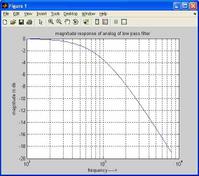IFFT MATLAB: Inverse Fast Fourier Transform Explained
Advertisement
This page compares IFFT and FFT functions and highlights the differences between IFFT and FFT terms.
IFFT stands for Inverse Fast Fourier Transform, while FFT stands for Fast Fourier Transform.
Introduction
The IFFT and FFT are often used together in a wide range of applications because they complement each other and enable efficient analysis. They’re used in processing signals in both time and frequency domains and are fundamental tools in both MATLAB and mathematics. IFFT and FFT are applied in various fields including signal processing, digital communications, image processing, system identification and modeling, mathematics, and numerical analysis.
IFFT
- IFFT stands for Inverse Fast Fourier Transform.
- IFFT converts a frequency domain vector signal to a time domain vector signal.
- One application of IFFT is its use in the modulator block of an OFDM Transmitter.
IFFT Example (In MATLAB)
X = [1 2 3 4 5 6 7 8 9 10];
Y = ifft(X)
MATLAB output when the user runs the above script at the command line:
Y = 5.5000 + 0i -0.5000 - 1.5388i -0.5000 - 0.6882i -0.5000 - 0.3633i -0.5000 - 0.1625i -0.5000 + 0i -0.5000 + 0.1625i -0.5000 + 0.3633i -0.5000 + 0.6882i -0.5000 + 1.5388i
When you run `"fft(Y)"` at the MATLAB command prompt, you obtain the following output:
This output is the same as the original vector `X` mentioned above.
ans = 1 2 3 4 5 6 7 8 9 10

Figure 1 depicts the IFFT equation. As the name suggests, it performs the reverse operation of the FFT. The IFFT takes frequency domain data, such as the magnitude and phase of each frequency component, and reconstructs the original time domain signal.
The IFFT algorithm is derived from the FFT algorithm and shares many similarities. However, it involves additional scaling factors and conjugate operations to properly invert the FFT output. The IFFT algorithm offers a fast implementation, which significantly reduces computational complexity compared to naive methods.
### IFFT Applications
The IFFT has numerous applications in various fields, particularly in signal processing and telecommunications. It is used for tasks such as audio compression, image compression, signal filtering, channel equalization, and system identification. Transformation of signals between time and frequency domains enables analysis, manipulation, and synthesis of signals with different frequency characteristics.
Following are some specific applications and usages of IFFT in MATLAB and mathematics:
- **Signal Processing:** Widely used for signal processing tasks such as signal reconstruction, filtering, and equalization. This is very useful for tasks such as audio/image processing, de-noising, and audio synthesis.
- **Digital Communications:** In communication systems, IFFT is an essential component in OFDM (Orthogonal Frequency Division Multiplexing) implementation. OFDM modulation and its variants, such as OFDMA, are widely used in WiFi, 4G LTE, and 5G NR systems.
- **Image Processing:** IFFT is employed for tasks such as image reconstruction, filtering, and compression. By applying IFFT to the frequency domain representation of an image, we can convert it back to the spatial or pixel domain. This enables operations like image reconstruction from compressed data. It can be used in frequency-based filters to remove noise or to enhance specific image features.
## FFT
- FFT stands for Fast Fourier Transform.
- FFT converts a time domain vector signal to a frequency domain vector signal.
- It is used before the demodulator block in the OFDM Receiver.

Figure 2 depicts the FFT equation.
## Difference between IFFT and FFT
The following table mentions the differences between IFFT and FFT functions used in MATLAB and Mathematics.
| Parameters | IFFT | FFT |
| :------------------ | :----------------------------------------------------------- | :-------------------------------------------------------------------------------------- |
| **Purpose** | To convert a frequency domain vector to a time domain vector | To convert or transform a time domain signal vector to a frequency domain signal vector |
| **Usage** | Reconstructing signals, time domain operations | Analyzing signals, frequency domain operations |
| **Implementation** | Reverse process of the FFT | Computation of the DFT |
| **MATLAB function** | `"IFFT"` | `"FFT"` |
| **Output** | Time domain representation | Complex valued frequency domain representation |
Both IFFT and FFT functions do not use scaling factors by default, but they are applied as needed based on specific use cases and requirements.
## Application: Use of IFFT and FFT in OFDM Chain
The figure depicts an OFDM Transmitter and Receiver along with IFFT and FFT modules at the transmitter and receiver, respectively. OFDM modulated data after IFFT is up-converted to the appropriate RF (radio frequency) for transmission as per wireless standard 802.11 or 802.16 OFDM specifications. Refer WiMAX Physical layer as per OFDM physical layer specifications defined in IEEE 802.16-2004 standard.

- **IFFT input:** Complex modulated data symbol vector (in frequency domain) as per BPSK, QPSK, 16QAM, 64QAM, or 256 QAM, etc.
- **IFFT output:** Complex data vector in the time domain.
Advertisement
 RF
RF







